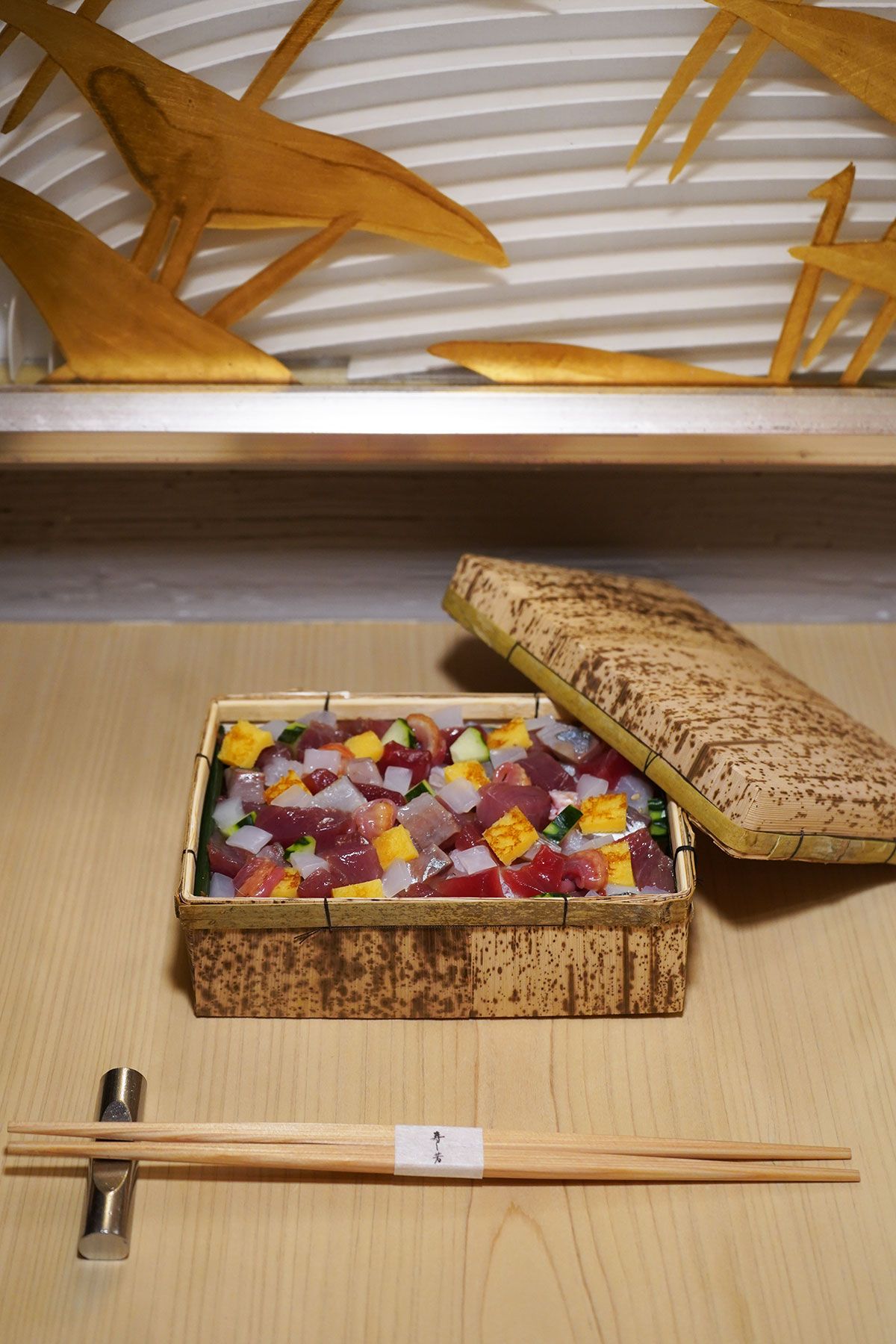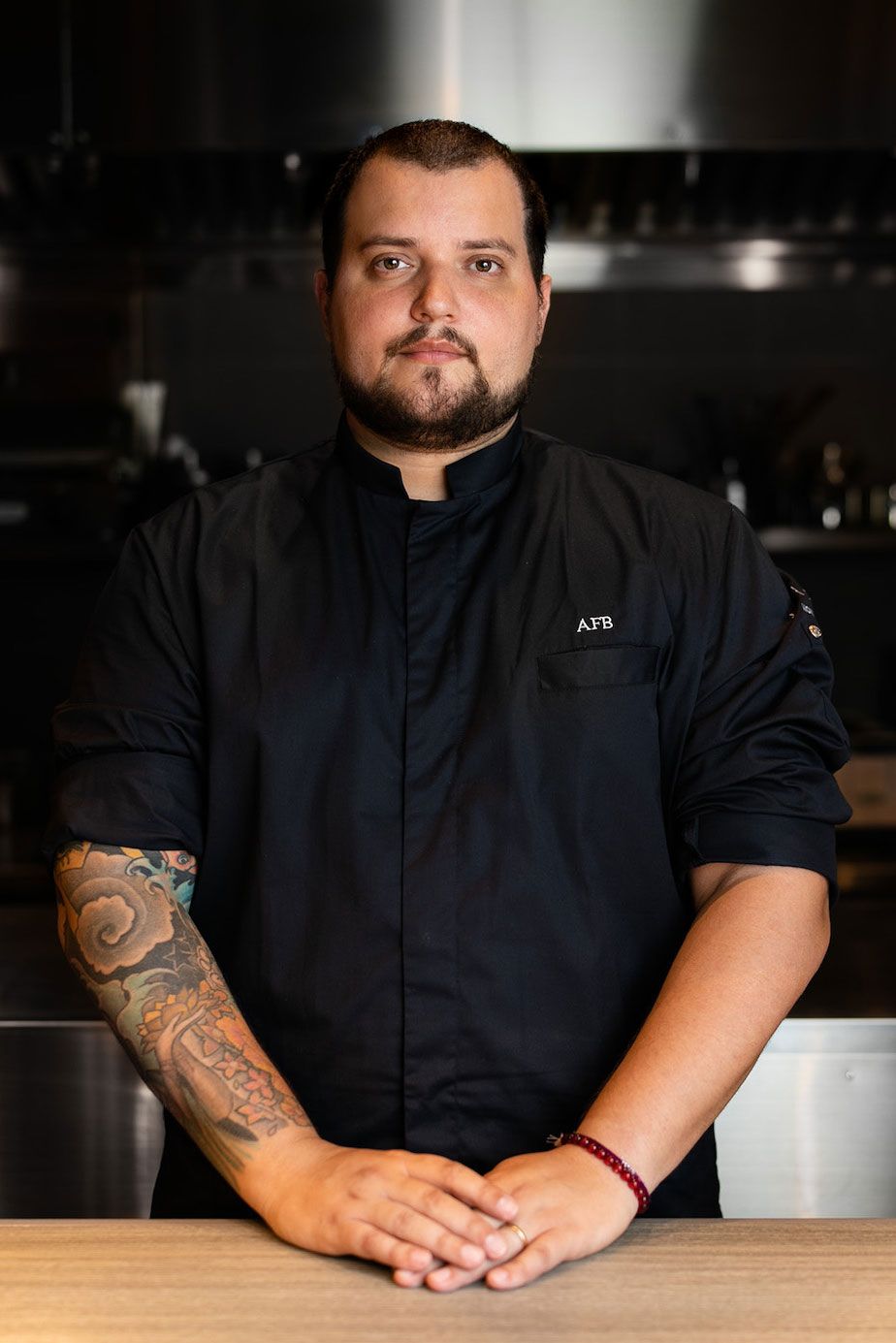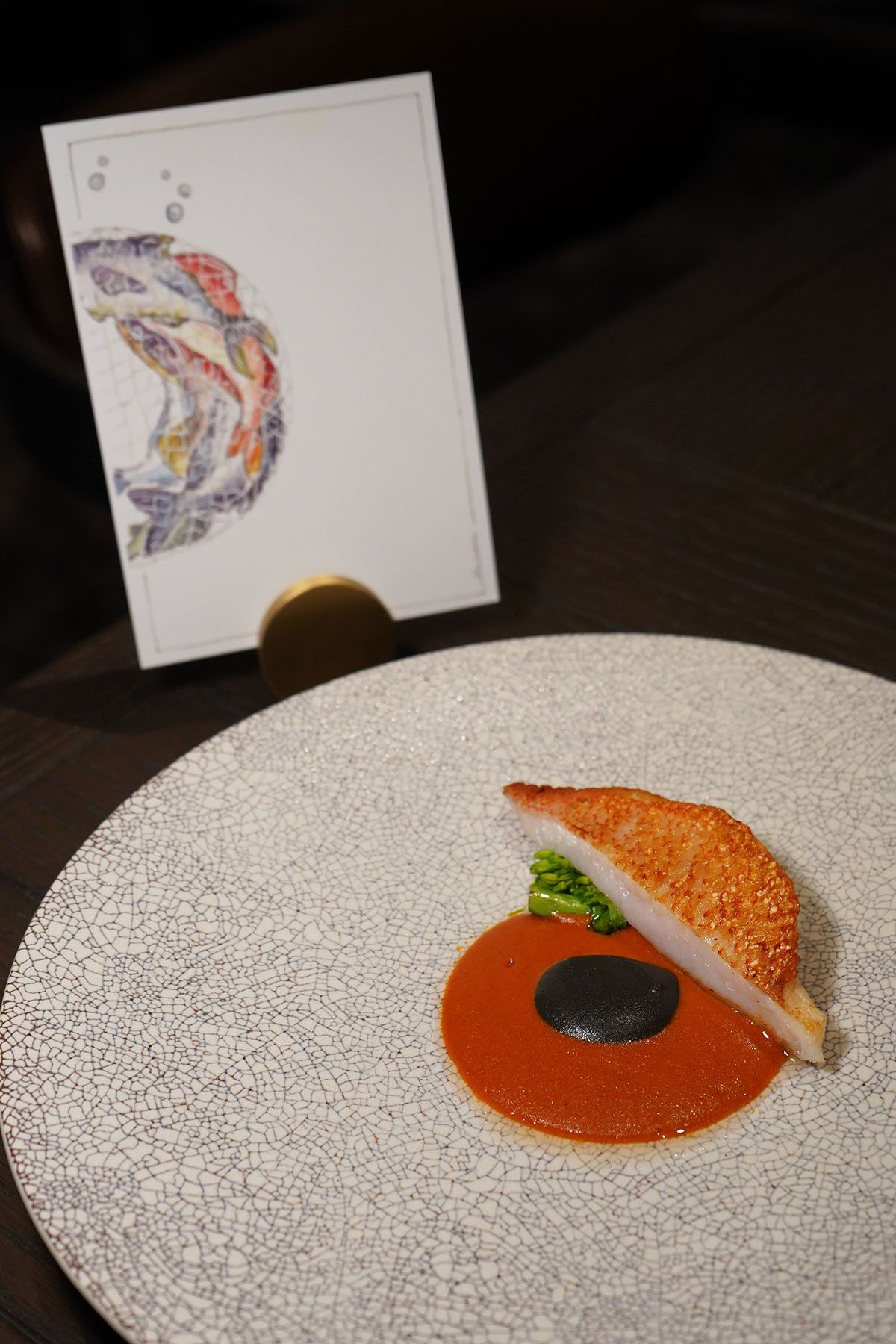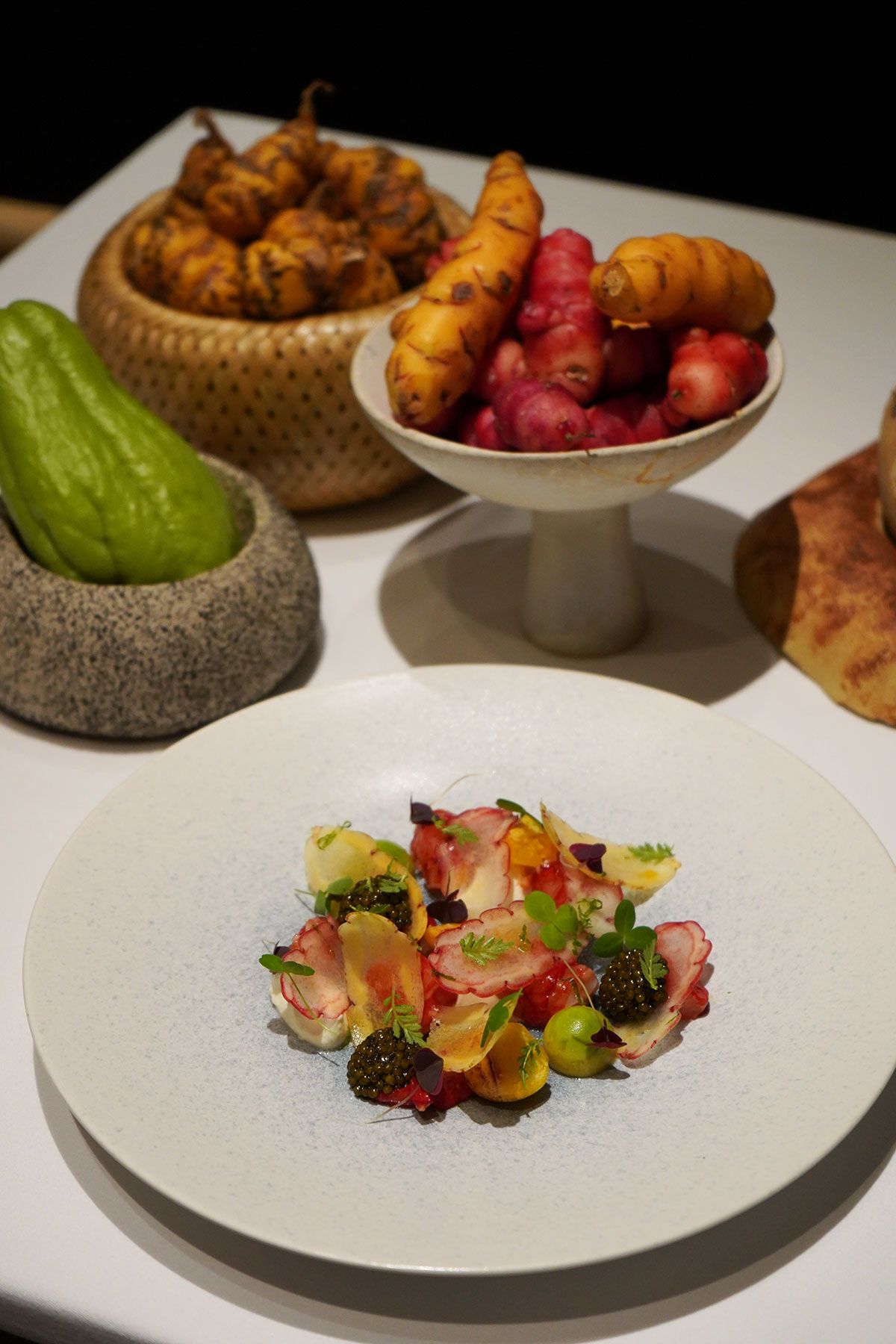Hiroki Nakanoue, Sushiyoshi


Bara-chirashi with katsuo, maguro, aji, shima aji and tamago
Traditionally made in Japanese households for children using leftover produce, bara-chirashi holds special significance for chef-patron Hiroki Nakanoue of Sushiyoshi, who inherited his family's sushi restaurant upon his father's untimely passing just six months into Nakanoue's fledgling career as a sushi chef. In the process of preparing seafood, there would inevitably be odds and ends which—despite falling short of a mouthful by themselves—could be transformed by Nakanoue's father into a meal for his son and the restaurant's employees, who were also considered as part of the family.
"My father had a large influence on my cooking style," says the two-Michelin-starred chef, whose reputation for boundary-breaking omakase precedes his mop of bubblegum-pink hair. "The most important thing he taught me was the importance of making the cooking process transparent for our guests, from the provenance of the produce to the method of plating a dish."
Although Nakanoue doesn't yet have children, he nevertheless carries on his father's tradition today by preparing bara-chirashi for his staff in Osaka, Taipei and Hong Kong, in his role as the "father" of the restaurants. Laden with katsuo (bonito), maguro (tuna), aji (horse mackerel), shima aji (white trevally), and tamago (egg) atop a base of sushi rice, the meal is served bento style in a lunchbox fashioned out of dried bamboo leaves—a curiously traditional exception to his repertoire of sushi that has long defied categorisation.
Sushiyoshi, 1/F, The Otto Hotel, 8 Cameron Road, Tsim Sha Tsui, Hong Kong
Agustin Balbi, Ando




